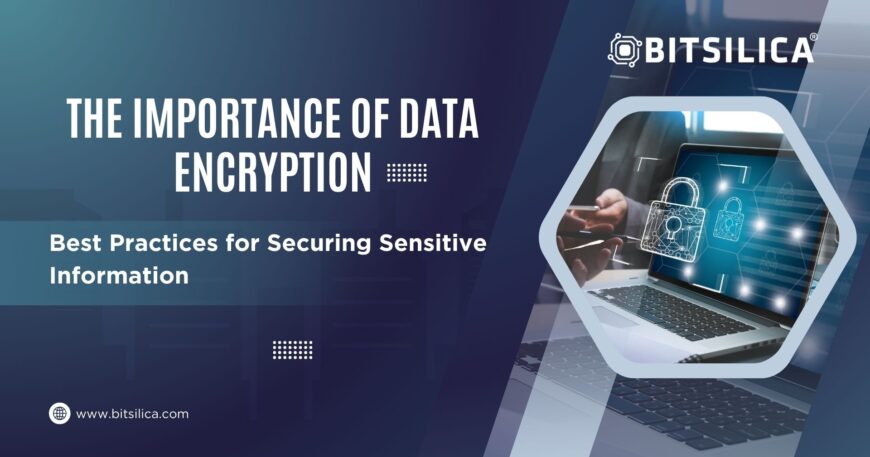The Importance of Data Encryption: Best Practices for Securing Sensitive Information
Introduction
Data encryption is a fundamental component of cyber security, protecting sensitive information from unauthorized access. This blog post will explore the importance of data encryption, the different types of encryption, and best practices for effectively securing data.
Understanding Data Encryption
Data encryption is the process of converting plaintext into ciphertext using algorithms, making the data unreadable to unauthorized users. Only those with the decryption key can revert the ciphertext to its original form.
Types of Encryption:
• Symmetric Encryption: Uses the same key for both encryption and decryption. It is fast and suitable for encrypting large amounts of data. Example: Advanced Encryption Standard (AES).
• Asymmetric Encryption: Uses a pair of keys – a public key for encryption and a private key for decryption. It is more secure but slower than symmetric encryption. Example: RSA (Rivest-Shamir-Adleman).
Example: In 2016, WhatsApp implemented end-to-end encryption, ensuring that only the sender and recipient could read the messages, significantly enhancing user privacy.
Importance of Data Encryption
Encryption protects data from being accessed or modified by unauthorized individuals, ensuring confidentiality, integrity, and security.
Key Benefits:
• Data Protection: Prevents unauthorized access to sensitive information.
• Compliance: Helps meet regulatory requirements such as GDPR, HIPAA, and PCI DSS.
• Trust: Builds trust with clients and customers by ensuring their data is secure.
Example: The 2013 Adobe data breach exposed 38 million users’ information due to inadequate encryption measures, emphasizing the need for robust encryption.
Encrypting Data at Rest
Data at rest refers to inactive data stored on physical media, such as hard drives, databases, or cloud storage.
Best Practices:
• Full Disk Encryption: Encrypt entire disks to protect all data stored on them. Example: BitLocker for Windows, FileVault for macOS.
• Database Encryption: Use database-level encryption to protect sensitive data stored in databases.
• Encryption of Backups: Ensure that all backup data is encrypted to prevent unauthorized access.
Example: In 2019, an unsecured backup server led to a data breach exposing 100 million financial records, highlighting the importance of encrypting backup data.
Encrypting Data in Transit
Data in transit refers to data actively moving from one location to another, such as over the internet or through private networks.
Best Practices:
• TLS/SSL: Use Transport Layer Security (TLS) or Secure Sockets Layer (SSL) to encrypt data transmitted over networks. Example: HTTPS for secure web communication.
• VPNs: Use Virtual Private Networks (VPNs) to encrypt data moving across less secure networks, such as public Wi-Fi.
• Secure Email: Use encrypted email services and encryption protocols like PGP (Pretty Good Privacy) to secure email communication.
Example: The Equifax breach in 2017 was partly due to unencrypted data transmission, leading to the exposure of 147 million customers’ information.
Key Management
Effective key management is essential to maintaining the security of encrypted data. It involves generating, storing, and protecting encryption keys.
Best Practices:
• Secure Storage: Store keys in secure hardware modules, such as Hardware Security Modules (HSMs).
• Access Controls: Implement strict access controls to limit who can access encryption keys.
• Regular Rotation: Regularly rotate encryption keys to minimize the impact of potential key compromise.
Example: In 2018, a breach of a cryptocurrency exchange was linked to poor key management practices, resulting in the loss of millions of dollars.
Implementing Encryption Policies
Organizations should have clear encryption policies that outline the standards and procedures for encrypting data.
Best Practices:
• Policy Development: Develop comprehensive encryption policies covering data at rest, data in transit, and key management.
• Regular Audits: Conduct regular audits to ensure compliance with encryption policies and identify potential vulnerabilities.
• Employee Training: Train employees on the importance of data encryption and how to follow encryption policies.
Example: A 2020 study found that companies with well-defined encryption policies experienced 50% fewer data breaches compared to those without such policies.
Conclusion
Data encryption is a vital practice for protecting sensitive information and maintaining cyber security. By understanding and implementing the best practices for encrypting data at rest and in transit, managing encryption keys, and developing robust encryption policies, organizations can significantly reduce the risk of data breaches and enhance overall security.





